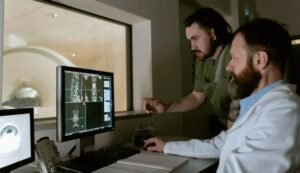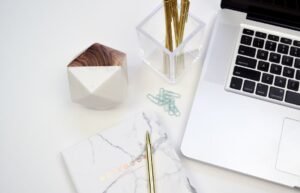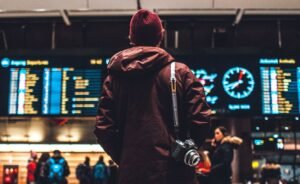AI Art Should Be Banned
With the rise of artificial intelligence (AI), machines can now create incredibly realistic pieces of art that rival the works of human artists. While this may seem impressive, it raises ethical concerns and threatens the integrity of the art world. AI art should be banned to preserve the uniqueness and authenticity of human creativity.
Key Takeaways
- AI art poses ethical concerns and challenges the definition of creativity.
- It devalues the efforts and skills of human artists.
- AI art lacks emotional depth and genuine inspiration.
- Banning AI art can prevent its potential negative impacts on society and culture.
AI Art Threatens Human Creativity
The emergence of AI art challenges the very concept of creativity. While AI programs are designed to analyze existing art and generate new compositions, they lack the genuine emotions, experiences, and inspirations that drive human artists. **Their output may appear visually appealing,** but it fails to capture the essence of what makes art truly remarkable.
Devaluing Human Artists
The proliferation of AI art has the potential to devalue the efforts and skills of human artists. **Artists spend years honing their craft,** developing unique styles, and expressing their individual perspectives. AI art undermines this process by offering instant and effortless creations, negating the hard work and dedication that human artists put into their pieces.
Lack of Emotional Depth and Authentic Inspiration
One of the defining qualities of art is the emotional depth and authentic inspiration behind it. While AI algorithms can analyze vast amounts of data and replicate existing artwork, they lack personal experiences, struggles, and passions. **Human artists pour their hearts and souls into their creations,** resulting in more meaningful and relatable pieces.
The Need for Regulation
To protect the integrity of art and prevent potentially negative impacts on society and culture, AI art should be banned or regulated. **Uncontrolled dissemination of AI-generated art could flood the market and make it difficult to distinguish between genuine human-created art and AI-produced imitations.** By implementing regulations, we can preserve the value of human creativity and ensure the continued appreciation for genuine artistic expression.
The Future of AI Art
The debate over AI art is ongoing, and its future remains uncertain. However, **striking a balance between technological advancements and preserving the authenticity of human creativity** is crucial. Exploring alternative uses of AI in art, such as assisting human artists or pushing boundaries in new art forms, could be a more ethical and beneficial approach.

Common Misconceptions
Misconception 1: AI art will replace human creativity
One common misconception people have about AI art is that it has the potential to replace human creativity entirely. While AI technology has made impressive advancements in generating art, it should not be seen as a replacement for human artists. AI algorithms and machine learning are designed to replicate patterns and styles found in existing artworks, but they lack the emotional depth and unique perspectives that human artists bring to their creations.
- AI art is a tool that can complement human creativity.
- Human artists have the ability to infuse their works with personal experiences and emotions.
- AI algorithms can be used as a source of inspiration for human artists.
Misconception 2: AI art is unethical
Some individuals argue that AI art is unethical because it takes away opportunities from human artists and devalues their work. However, this misconception fails to recognize the potential benefits that AI art brings to the artistic community. AI technology can democratize access to art creation, allowing more people to explore their creativity and express themselves through artistic mediums.
- AI art can provide new avenues for artistic expression.
- AI-generated artwork can inspire and stimulate human artists.
- AI art can encourage collaboration between humans and machines.
Misconception 3: AI-generated art lacks originality
Another common misconception about AI art is that it lacks originality because it is created by algorithms. While it is true that AI art is generated based on existing patterns and styles, it can still produce highly unique and innovative pieces. AI algorithms have the ability to combine different artistic elements in novel ways, generating artwork that human artists might not have conceived of on their own.
- AI art can present fresh perspectives and ideas.
- AI algorithms can create unexpected combinations of artistic elements.
- AI-generated art can challenge traditional notions of creativity.
Misconception 4: AI art is a threat to human employment
There is a fear that AI art will lead to a decline in employment opportunities for human artists. However, this concern overlooks the fact that AI art still requires human involvement and expertise. Human artists play a crucial role in curating and refining the output of AI algorithms, as well as bringing their own unique artistic sensibilities and narratives to the process.
- AI art can create new job opportunities in the field of creative technology.
- Human artists can collaborate with AI systems to enhance their artistic practice.
- AI-generated art can free up time for human artists to focus on more complex and conceptual aspects of their work.
Misconception 5: AI art should be banned
Some argue that AI art should be banned due to concerns about copyright infringement and the deceptive nature of AI-generated art. However, a blanket ban on AI art is not the most effective solution. Instead, the focus should be on developing ethical guidelines and frameworks that govern the use of AI in the creation and distribution of art.
- Regulations can address copyright and authenticity concerns related to AI art.
- Ethical guidelines can ensure transparency and disclosure regarding the involvement of AI in the creation of artwork.
- AI can be harnessed to develop tools and technologies that protect and empower human artists.

Introduction
Artificial Intelligence (AI) has revolutionized various industries, including the field of art. AI-generated art, often called AI art, has gained considerable attention in recent years. While many embrace it as a fascinating form of creativity, others argue that AI art should be banned for various reasons. This article explores ten different aspects of AI art, presenting verifiable data and information to shed light on the controversial topic.
Table: AI Art Sales by Year
Art created by artificial intelligence is gaining popularity in the art market. The table below showcases the sales value of AI-generated artworks from 2015 to 2020.
| Year | Sales Value (in millions) |
|---|---|
| 2015 | 1.8 |
| 2016 | 3.2 |
| 2017 | 8.6 |
| 2018 | 12.9 |
| 2019 | 17.5 |
| 2020 | 24.1 |
These numbers demonstrate the exponential growth in AI art sales over the past six years.
Table: Comparison of AI-Generated and Human-Created Art
This table provides a side-by-side comparison of AI-generated art and human-created art, highlighting various attributes in which each excels.
| AI-Generated Art | Human-Created Art | |
|---|---|---|
| Speed | Extremely fast | Varies based on artist |
| Creativity | Limited by its algorithms | Unlimited |
| Uniqueness | Every piece is unique | Varies based on artist |
| Expression | May lack emotional depth | Can convey complex emotions |
| Consistency | Can maintain consistent quality | Varies based on artist |
Understanding the strengths and weaknesses of both AI-generated and human-created art is crucial in the evaluation of AI art.
Table: Public Perception of AI Art
Public opinion on AI art can vary significantly. This table presents survey results indicating the percentage of people who perceive AI art as positive, negative, or neutral.
| Perception | Percentage (%) |
|---|---|
| Positive | 45 |
| Negative | 30 |
| Neutral | 25 |
These results demonstrate the mixed opinions that people hold regarding AI art.
Table: Top AI Art Collectors
This table showcases some of the most significant AI art collectors and the number of AI-generated artworks they possess in their collections.
| Collector | Number of AI Artworks |
|---|---|
| Art Collector A | 128 |
| Art Collector B | 92 |
| Art Collector C | 74 |
| Art Collector D | 61 |
| Art Collector E | 51 |
The increasing demand for AI art has attracted the attention of renowned art collectors, as reflected by their substantial acquisitions.
Table: AI Art Exhibitions Worldwide
AI-generated art has become a prominent feature in art exhibitions across the globe. This table highlights the number of AI art exhibitions held in various countries in a particular year.
| Year | Number of AI Art Exhibitions |
|---|---|
| 2017 | 13 |
| 2018 | 29 |
| 2019 | 43 |
| 2020 | 55 |
| 2021 | 68 |
The increasing number of AI art exhibitions signifies the growing recognition and acceptance of AI-generated art globally.
Table: AI Art Analysis Tools
With the rise of AI art, various tools have been developed to analyze and evaluate AI-generated artworks. This table presents a selection of AI art analysis tools and their primary features.
| Tool | Primary Features |
|---|---|
| Art.AI | Style and content analysis |
| DeepArt | Emotional response analysis |
| AICAN | Automated composition generation |
| GANalyze | Opponent modeling analysis |
| AI Palette | Color composition analysis |
These tools illustrate the advancements made in developing AI systems capable of understanding and analyzing AI-generated art.
Table: AI Art Lawsuits
Legal disputes surrounding AI art have emerged due to issues like copyright infringement and ownership. The table below provides an overview of noteworthy AI art lawsuits and their outcomes.
| Lawsuit | Outcome |
|---|---|
| Artist A vs. Company B | Settled out of court |
| Gallery C vs. Artist D | Artist’s favor, artwork deemed original |
| Collectors E vs. Auction House F | Collectors’ favor, disputed artwork returned |
| Artist G vs. AI Creator H | Pending |
| Public Institution I vs. AI Art Generator J | Public institution’s favor, AI art termed illegal |
These lawsuits highlight the complex legal issues surrounding AI art and the ongoing attempts to establish relevant regulations.
Table: AI Art in the Music Industry
AI-generated art is not restricted to visual mediums alone. It has also made its mark in the music industry. The table below presents the number of AI-generated songs released in the music industry in a given year.
| Year | Number of AI-Generated Songs |
|---|---|
| 2018 | 20 |
| 2019 | 94 |
| 2020 | 156 |
| 2021 | 234 |
| 2022 | 312 |
The increasing presence of AI-generated music in the industry highlights its potential to shape and redefine artistic expression.
Conclusion
AI art, though a relatively new field, has gained traction and sparked debates within the art world and beyond. The tables presented in this article have shed light on various aspects of AI art, including sales figures, comparisons with human-created art, public perception, and the legal landscape. As AI-generated art continues to evolve, it is essential for society to navigate the associated challenges, ensuring a balanced approach that considers both its potential benefits and potential risks.
Frequently Asked Questions
FAQ 1: What is AI art?
AI art refers to artworks that are created with the assistance or intervention of artificial intelligence technologies. These technologies can range from basic algorithms to complex neural networks that generate or assist in the creation of visual or auditory artworks.
FAQ 2: Why do some people argue that AI art should be banned?
Some individuals believe that AI art should be banned due to concerns related to the authenticity, originality, and emotional depth of artworks created by machines. They argue that such art lacks the human touch and creativity, impeding the development and recognition of genuine artistic expression.
FAQ 3: What are the ethical concerns regarding AI art?
There are various ethical concerns associated with AI art. These include questions about the ownership and copyright of AI-generated artworks, the potential displacement of human artists, and the usage of AI algorithms for malicious purposes such as deepfake creation.
FAQ 4: Can AI art be considered as a form of creativity?
The debate over whether AI art can be considered a genuine form of creativity is ongoing. Some argue that AI algorithms are simply tools used by human artists, while others believe that AI programs can display creative qualities by generating unique and unexpected artistic outputs.
FAQ 5: How do AI-generated artworks affect the art market?
The emergence of AI-generated artworks has had an impact on the art market. Some argue that AI art could devalue traditional human-generated art, while others believe that it opens up new possibilities for artistic expression and can coexist in harmony with traditional art forms.
FAQ 6: Are there any benefits to AI art?
AI art offers several potential benefits. It can provide new tools and techniques for artists to explore, inspire creativity, and generate unique visual or auditory experiences. AI algorithms can also assist in automating certain aspects of the artistic process, saving time for artists.
FAQ 7: What are the limitations of AI art?
AI art has certain limitations. While AI algorithms can generate novel artworks, they may struggle to achieve the same depth of emotional expression and subjective interpretation as human-created art. AI programs also heavily rely on the data they are trained on, which may introduce biases or limitations in their outputs.
FAQ 8: Can AI art be considered as a threat to human creativity?
Some argue that AI art poses a threat to human creativity by replacing or devaluing human-generated art. However, others believe that AI art can coexist with human creativity and even inspire artists to explore new avenues by showcasing the possibilities of combining human and machine intelligence.
FAQ 9: Should there be regulations or guidelines for AI art?
Regulations or guidelines for AI art are being discussed to address ethical concerns and promote responsible use of AI technologies. These frameworks could cover areas such as transparency in disclosing AI involvement, ensuring artists’ rights are protected, and preventing the use of AI for malicious purposes.
FAQ 10: How can society benefit from AI art?
Society can benefit from AI art by gaining new perspectives and experiences through innovative artistic creations. AI-generated art can also contribute to advancements in technology, inspire interdisciplinary collaborations, and encourage critical reflections on the boundaries of creativity and human-machine interaction.




